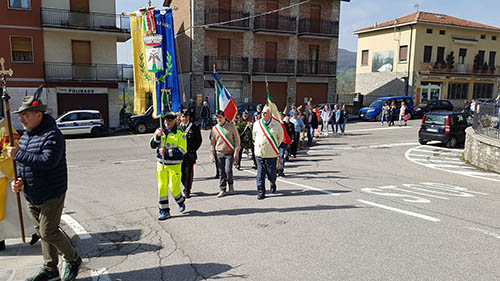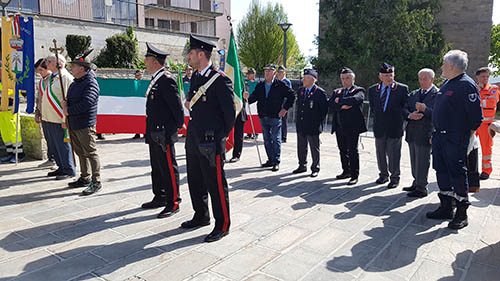BLOG
Life's pleasures of living in Italy
Two Countries, Two Wars - Celebrating the Anzac Day and Liberation Day

Celebrating ANZAC Day has always been an important date of remembrance in Australia, not only honouring those who served but also for celebrating the first time that Australian and New Zealand armed forces marched off to war in 1914 under their own flags, instead of that of Great Britain.
For Italy the twenty fifth of April is also a very important day as the country celebrates Liberation Day – the end of the Fascist regime and the Nazi occupation, the end of the Italian Civil war plus the victory of the Resistance movement. In both countries it is a public holiday and in all the large cities, smaller towns and hamlets it is a day of remembrance of those all who lost their lives during both WW1 and WW2.
As a ‘new’ Australian child growing up in Perth, Western Australia, I remember learning all about ANZAC Day and the story of Simpson and his donkey and his amazing courage. Each year we were bussed to the War Memorial in Kings Park overlooking the Swan River. There we joined other schools from all over the metropolitan area and sang ‘God Save the Queen,’ listened to the ‘Last Post’ and heard speeches about bravery, loss and valour.
A lifetime later, now living in a small mountain town in the Apennines of northern Italy we have joined in the annual Liberation Day celebrations. Each year on the twenty fifth of April we assemble in the main piazza in Polinago to join former members of the Alpini and Carabinieri, along with the local mayor, the junior Mayor who is an elected representative of the local primary school student council and other villagers to march behind military banners and a long Italian flag carried on either side by former members of the Alpini. We walk solemnly to a park at one end of the town where there is a memorial to a fallen Carabinieri soldier Salvo D’Aquisto. A wreath is laid at this memorial and, our elderly local priest Don Paolo recites a prayer, a representative from the Carabinieri gives a short speech, the Italian national anthem is sung (all the verses) and then the last post is played, followed by the laying of a wreath and the flags and banners are dipped. After the service the priest leads the parade, followed by the large Italian flag and banners back through town to the main piazza where the mayor welcomes everyone and reads another speech, followed by the priest and then a wreath is laid on the memorial to the fallen members the community and once again the national anthem is sung, the last post played and the assembled crowd moves on the church for a church service.
While the services are regarded as sombre and taken seriously, however this is still Italy. Sometimes it is difficult to hear what is being said due to the number of animated conversations taking place at the same time by onlookers. The march is always somewhat shambolic and seems to appear to be disorganised. The national anthem is more like a three-part opera and everyone knows all the verses and sings along full voiced and it finishes on a rousing note with everyone say loudly “Si” and followed by clapping.
The Alpini is an army group established in 1872 to protect Italy’s northern mountain borders. Members are selected from the mountain regions only and all proudly wear the corps hat with its jaunty eagle feather on the side. Over the years most young men from Alpine regions were conscripted into the Alpini which created and automatic bond. Italy abolished conscription in January 2005 and today retired Alpini form the back bone of the Emergency Services and are regarded as being trustworthy and hardworking and are easily noticed as on occasions such as Liberation day they proudly wear their Alpini hat.
The former Carabinieri, although somewhat larger than they used to be, turnout in their smart uniforms and there are always a couple of current serving members resplendent in the dark navy, well pressed uniform with a red stripe down the side of the trouser legs and dark navy caps looking at their peak of sartorial elegance. The Alpini generally wear a particular colour of check shirt from group to group, which varies from group to group. With their hats on, they are hard to miss.
If 25 April falls on a Sunday generally a lunch is organised either at a restaurant or school sports hall for those wishing to attend. It doesn’t take long before the singing starts and it is wonderful to hear everyone singing heartily the songs of the mountains and the special songs of the Alpini. Certainly plenty of wine along with the food is consumed, in Australia it would be beer and possibly a game of ‘two up’.
Return to Blog





